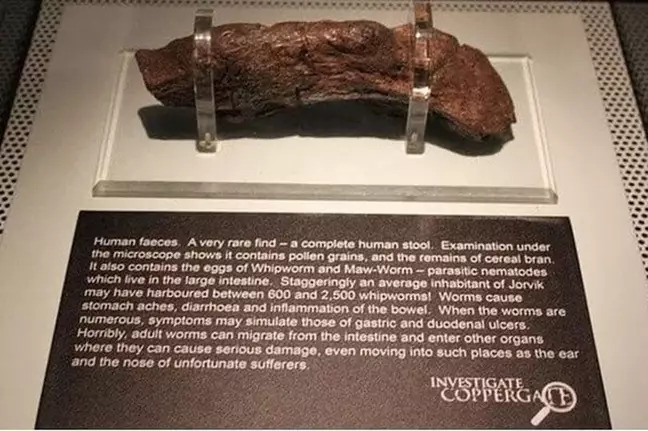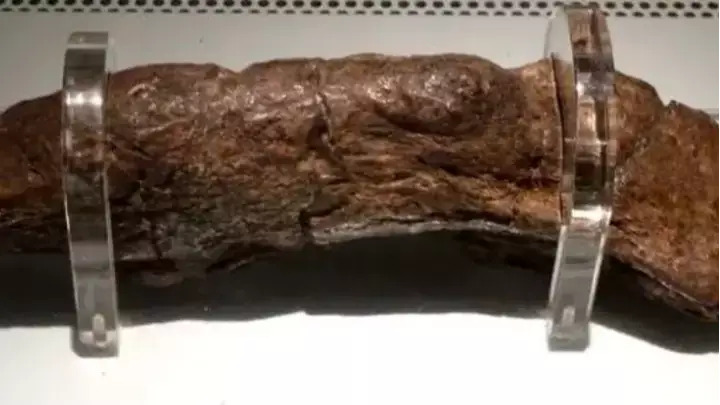Largest Poo On Record Reveals Ancient Human Diet
The largest poo on record reveals ancient human diet. The largest recorded fecal sample, dated back more than a millennium, is providing interesting insights into the diet of ancient humans.
Author:Xander OddityReviewer:Raven NoirMar 31, 202360 Shares823 Views

The largest poo on record reveals ancient human diet. The largest recorded fecal sample, dated back more than a millennium, is providing interesting insights into the diet of ancient humans.
The sample, believed to have been excreted by a Viking man, was discovered in York around fifty years ago and has been stored at a museum ever since. The sample is around 20 centimeters long and 5 centimeters wide, which is significantly larger than any other fecal sample recorded.
Largest Recorded Poo Unveils Fascinating Insights into Ancient Human Diet
Researchers have tested the ancient poo, known professionally as paleo-faeces or coprolite, and discovered that the Viking man's diet consisted primarily of meat and bread.
The fecal matter was found to be moist and peaty, which strongly suggests that he was poorly nourished. The sample also contained hundreds of eggs of parasitic intestinal worms, indicating that the Viking man had a severe case of worms.
The poo offers a fascinating insight into the lives of people from that time, as it has been stored in a museum for centuries.
The researchers have also determined that the person who created the fecal matter had very itchy bowels, possibly due to intestinal worms. The discovery has garnered significant interest from the scientific and historical communities.
The study of the fecal sample has demonstrated that scientific research can take many different forms and can provide insights into different aspects of life, such as the diet and health of ancient humans. While the study may seem a bit obscure, it highlights the potential benefits of researching all types of data, including ancient fecal matter.
The discovery of the largest recorded fecal sample has also shed light on the practices of ancient civilizations when it comes to waste management. The fact that the sample has survived for more than a thousand years highlights the importance of preserving and studying waste materials from the past.
This could potentially lead to a better understanding of ancient sanitation practices and how they evolved over time. The study of such samples also highlights the value of interdisciplinary research, where historians, archaeologists, and scientists can work together to uncover fascinating insights into our past.
Conclusion
In conclusion, the largest recorded fecal sample provides a unique and fascinating insight into the diet and health of an ancient Viking man. The study of such samples highlights the diverse ways that science can help us understand the past and learn from it.
The Viking man may have lived more than a millennium ago, but his diet and health offer valuable lessons for the present and the future.

Xander Oddity
Author
Xander Oddity, an eccentric and intrepid news reporter, is a master of unearthing the strange and bizarre. With an insatiable curiosity for the unconventional, Xander ventures into the depths of the unknown, fearlessly pursuing stories that defy conventional explanation. Armed with a vast reservoir of knowledge and experience in the realm of conspiracies, Xander is a seasoned investigator of the extraordinary.
Throughout his illustrious career, Xander has built a reputation for delving into the shadows of secrecy and unraveling the enigmatic. With an unyielding determination and an unwavering belief in the power of the bizarre, Xander strives to shed light on the unexplained and challenge the boundaries of conventional wisdom. In his pursuit of the truth, Xander continues to inspire others to question the world around them and embrace the unexpected.

Raven Noir
Reviewer
Raven Noir is a captivating and enigmatic news reporter who unravels mysteries with a relentless pursuit of truth. Possessing an insatiable curiosity and an astute mind, Raven delves into the depths of complex stories, unearthing secrets that lie beneath the surface. With a masterful grasp of deduction and observation, Raven stands as a beacon of fearless investigation.
In the realm of journalism, Raven is known for his enigmatic presence, drawing people in with an aura of intrigue. Driven by an unwavering passion for unveiling the truth, Raven Noir continues to shed light on the darkest corners of society. Through captivating storytelling and unwavering determination, he challenges conventions and uncovers enigmatic secrets that lie just beyond the surface.
Latest Articles
Popular Articles
